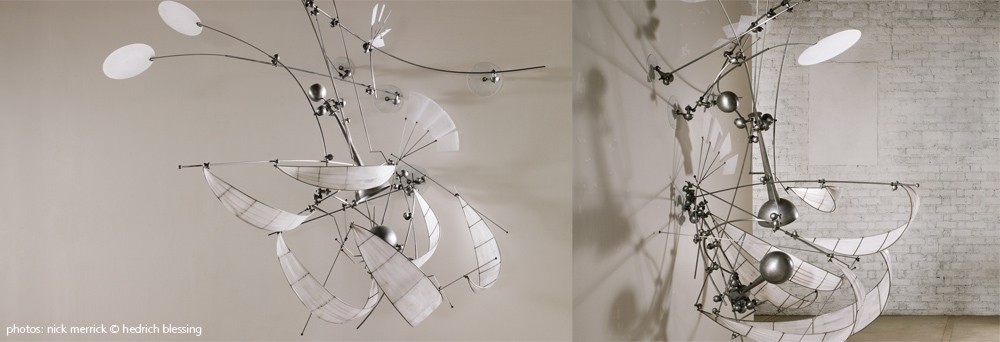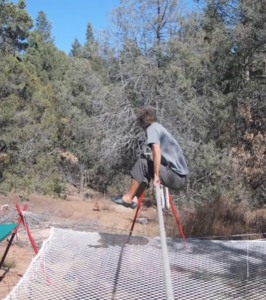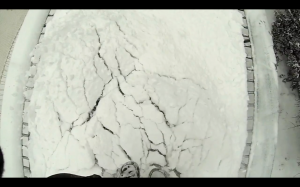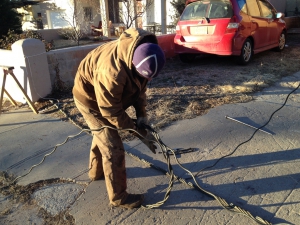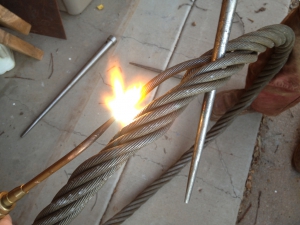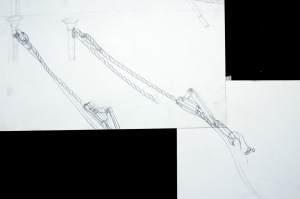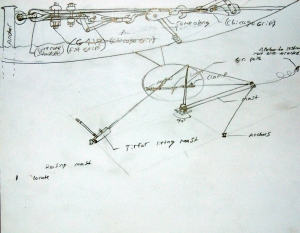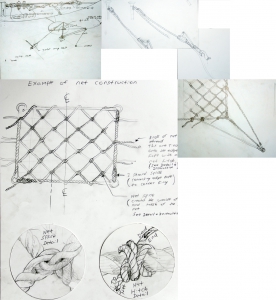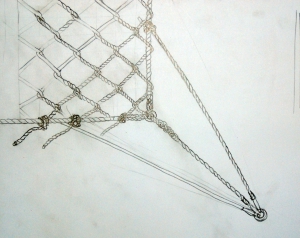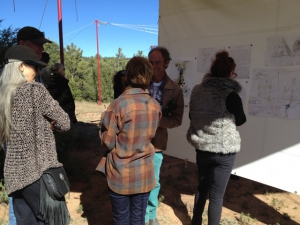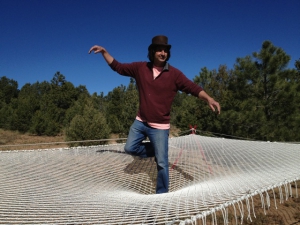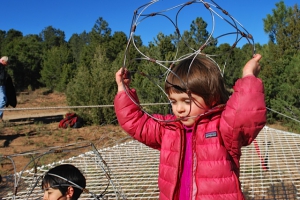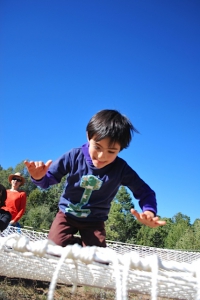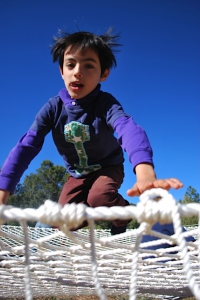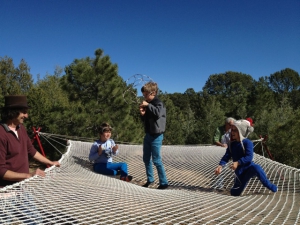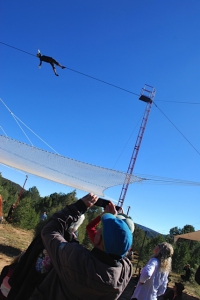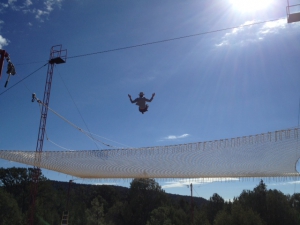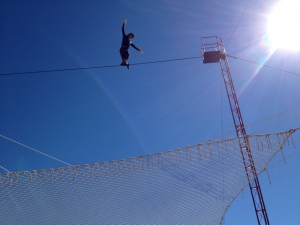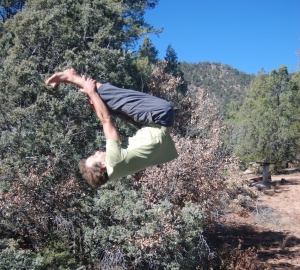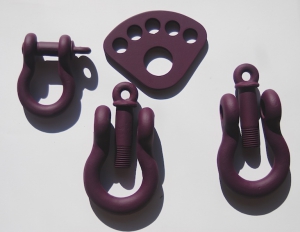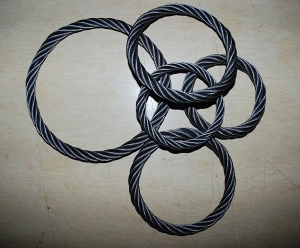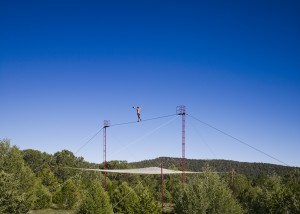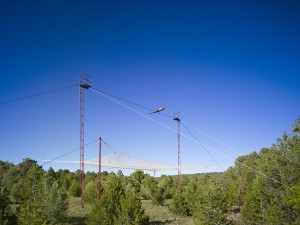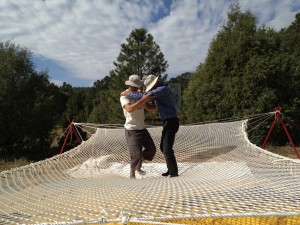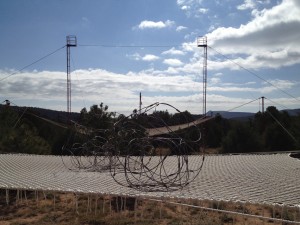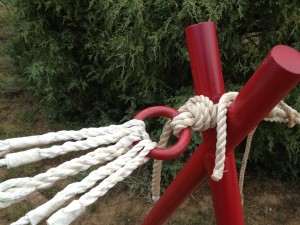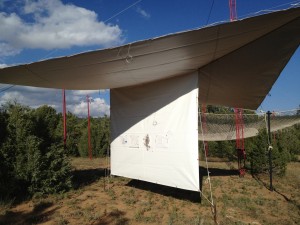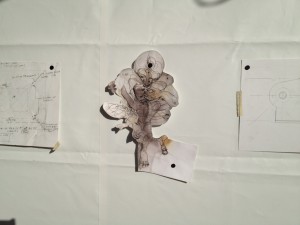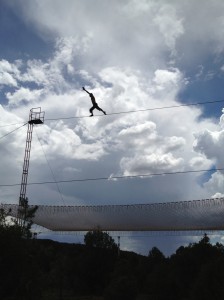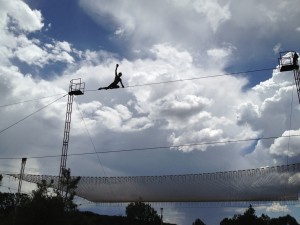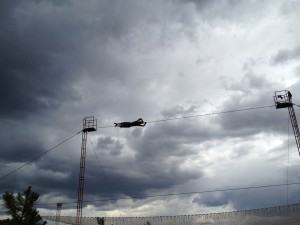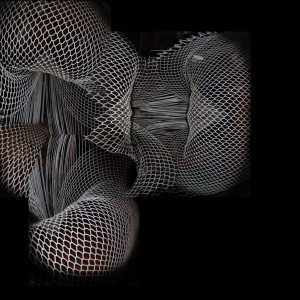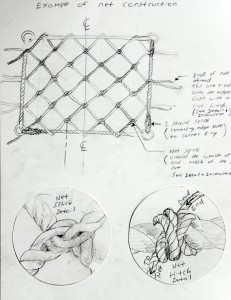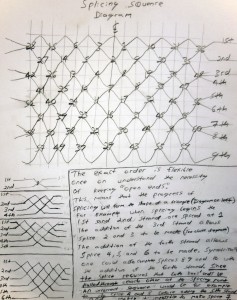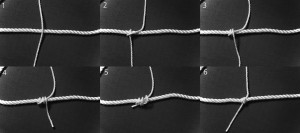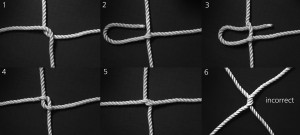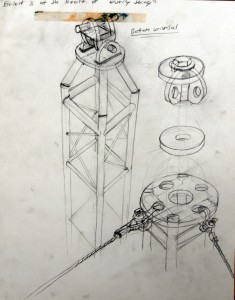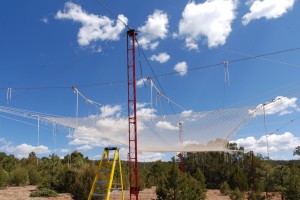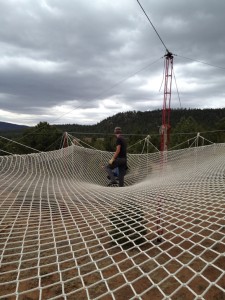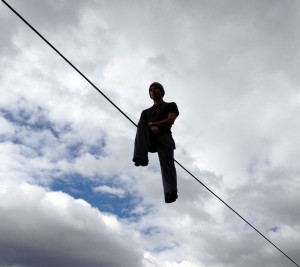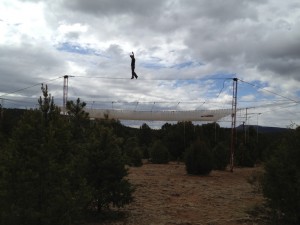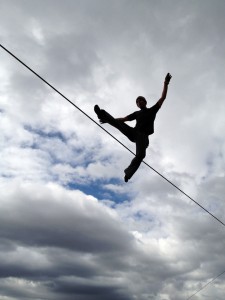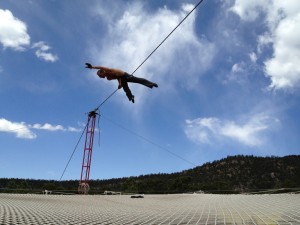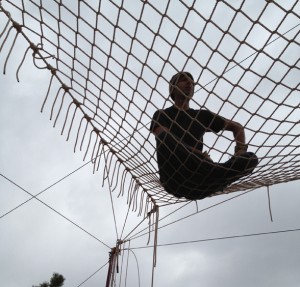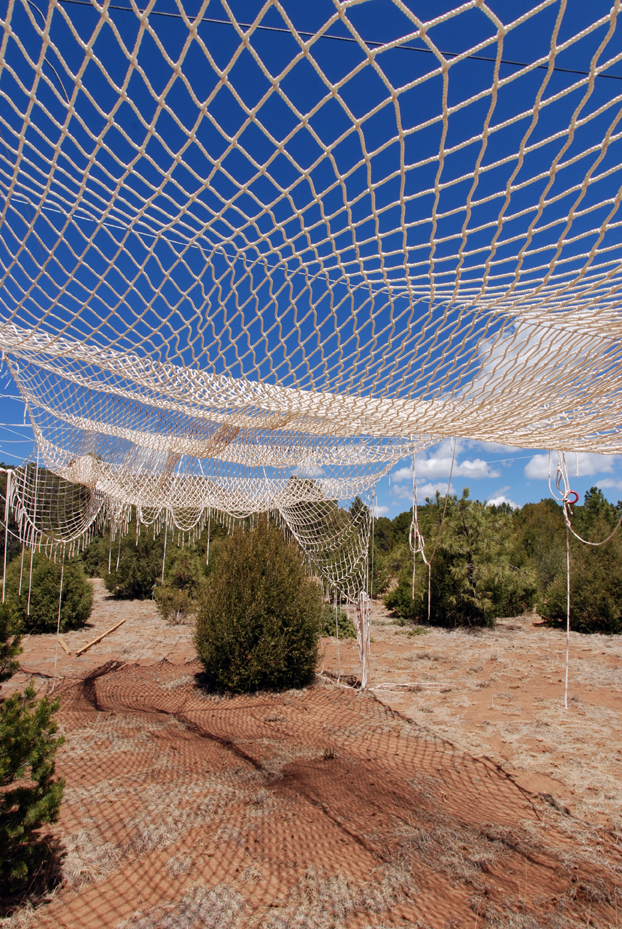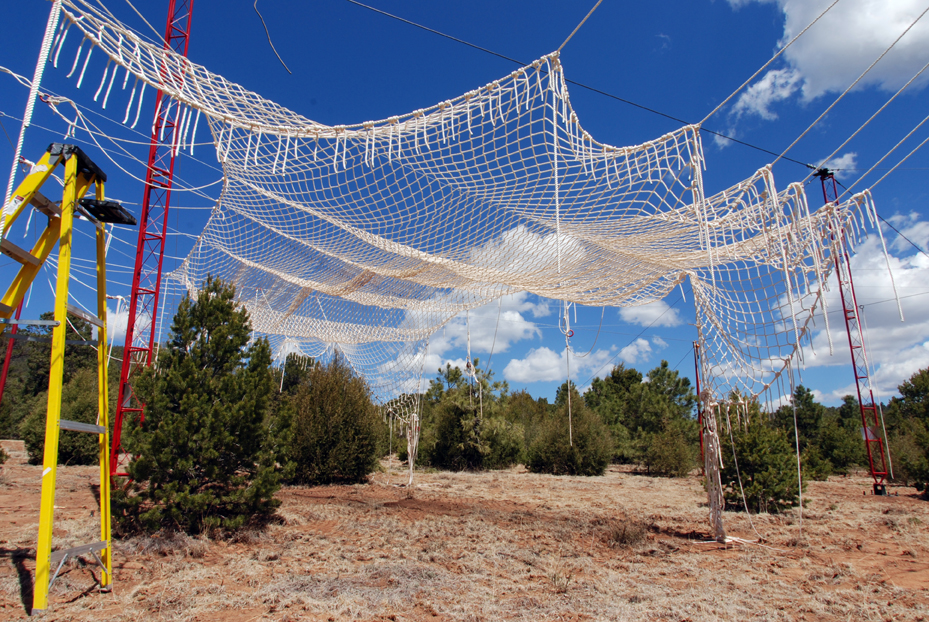This month’s work consisted of preparing for and attending the winter residency. For the residency I wished not just to show a powerpoint presentation, but also to involve the Transart community in an act of communal play.
Since my project has evolved beyond being an exercise in building, engineering and the evolution of an aerialist, I wanted to share something additional to documentation. I planned to bring something tangible from my project, something which is not shown solely, but experienced. During a conversation with my advisor Mary Ting, I described an idea of how to do this. I would weave a small net which I could bring to NYC. We would suspend this net by gathering all together around its edge and pulling it taught with our collective effort. This would allow one person to play on the tensioned net. The inspiration for this idea, in part, came from the Eskimo festival of Nalukataq. This festival is in the spring and is where and when the bounty of the whale hunts are shared by being distributed to the community. During this festival, conflict between rival communities is ignored to allow distant relatives to share in the celebration and abundance. The central event, from which the festival derives its name, is the game of the blanket toss. Sewn skins form a trampoline which is held by the participants positioned around the perimeter, and a performer is supported on the surface and then tossed into the air by collective effort. Anyone can be the performer, but usually the captains of the hunts and their wives are the first to be tossed into the air and while they are airborne they throw gifts into the crowd.
The idea of a person being tossed high into the air in order to distribute goods is for me a rich metaphor. He or she can be high above the rest, but it is the many who send this person airborne. The power of a leader is dependent on the existence of the subjects and their ability to work together.
If along only one edge people pull on the blanket, the flyer may tumble, loosing his or her footing. For the flyer to fly upright bouncing with poise, the edges of the blanket must be pulled evenly and in unison. To me this says many things interesting about the dynamics inherent in power relationships. For instance, I feel the strength of the flyer develops from the unity of his or her blanket supporters.
I thought that the game of blanket toss would make a perfect introduction to my presentation, so I set about construction a small net which I would be able to bring to NYC. I built the net in a little over a week, with the help of some terrible weather which kept me off my wire, quarantining me to the weaving table. I also decided to bring some sculptural elements which I have been building recently. They are called cable grommets.
They are made by unraveling a single strand of wire rope whose length is dependent upon the diameter of the ring to be made. This strand is then wrapped around itself 6 times until a wire rope ring is formed in the shape of circle. The two ends of the strand then stick out in opposite directions from a single point tangent to the outside of the ring. The tricky part is burying those ends by moving them into the central void formed between the six strands as they lay in a circle touching each other. As the end strands cross each other, they are pressed from the surface to disappear into the void in the core of the wire rope. This requires considerable force which is exerted by two large Marlin Spikes (basically two modestly tapered steel spikes).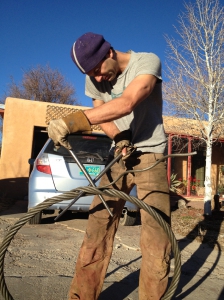
The rings are interesting because most people have never seen rope take a circular, seemingly uninterrupted form. We have the expectation that rope is a linear material constructed of fibers which have a beginning and an end. But the ring’s “fibers” appear, at least to a person not acquainted with their construction, to have no beginning or end. They are perceived to be continuous which feels impossible. One of first things I hear from people when they see a ring is “how does that happen.” It is puzzling and in the same way that a slight of hand trick ignites the imagination so do the rings.
The other important thing I showed at the residency was documentation of my performance and event. I also showed a short video of jumping on a trampoline in the snow, which I felt embodied an element of play which is critical to my process.
The response to my work was interesting to hear. Many people felt that I had done much to respond to the criticism which I faced one year ago, mainly the question of how can I involve the audience beyond just spectators. Nicolas had an interesting point which was to abandon structures which function and make some things which only could work in fantasy. For instance, a woven paper wire which could never be walked upon. Others felt that the documentation could really use the assistance of another, something which I have felt since the performance. It seemed that people also wanted to hear more about the conceptual basis of the work which I have a tendency to avoid. I think that this will be something which I will do when I present the final result this summer and can look back at my career in Transart working to reach the threshold of completion.
I am really looking forward to the break and using the time to delve into the authoring of my manual which I would like to have well underway at the beginning of next semester.
I also wanted to thank everyone at the residency for sharing their work and ideas. I had a great time and it was a pleasure to be part of this vital community.
Happy Holidays, jamie
